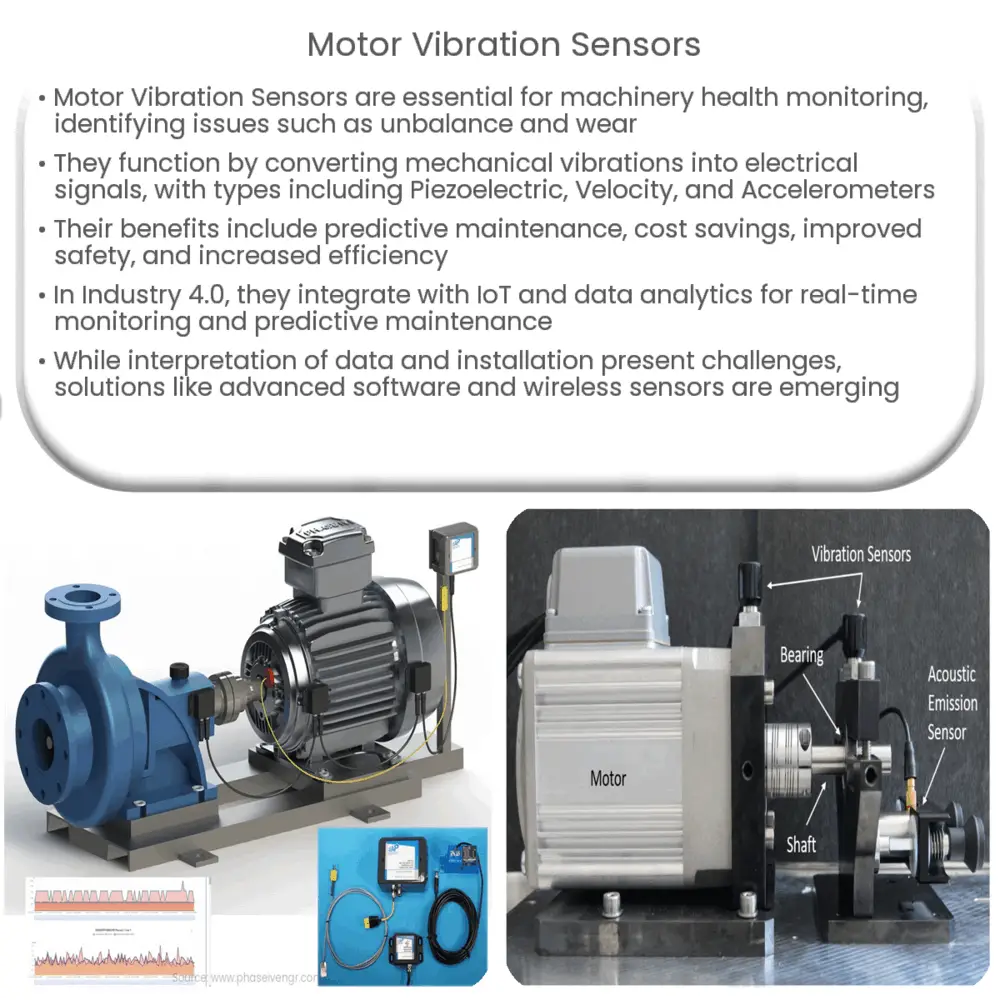Explore the role of Motor Vibration Sensors in predictive maintenance, their importance in Industry 4.0, and how IoT boosts efficiency.

Introduction to Motor Vibration Sensors
As one of the most vital components in any mechanical or industrial setup, motors need constant monitoring to ensure they function optimally. A primary tool for this purpose is the Motor Vibration Sensor. This device is dedicated to analyzing and quantifying vibrations occurring in motor components, thus acting as a critical tool for preventive maintenance and operational efficiency.
Why Monitor Motor Vibration?
Vibrations in a motor can be a sign of many underlying issues, including unbalance, misalignment, wear, or even mechanical looseness. All these factors can lead to decreased performance and eventual failure of the equipment if left unchecked. Therefore, early detection and diagnosis are crucial to prevent costly downtime and repair. This is where motor vibration sensors play an indispensable role.
The Working Principle of Motor Vibration Sensors
Motor Vibration Sensors operate based on the principle of converting mechanical vibrations into an electrical signal. The intensity and frequency of these vibrations are captured and processed into data that can be analyzed to assess the health of a motor.
Benefits of Using Motor Vibration Sensors
Motor Vibration Sensors offer a multitude of advantages that go beyond the essential aspect of preventive maintenance. They contribute significantly to enhancing the lifecycle of the machinery, improving safety, and increasing overall operational efficiency. Some of the benefits include:
As we dive further into the topic, we will explore the role of these sensors in the age of Industry 4.0, where the Internet of Things (IoT) and data analytics come into play, revolutionizing the face of motor maintenance.
Motor Vibration Sensors in Industry 4.0
As we navigate further into the era of Industry 4.0, motor vibration sensors are proving to be more than just a tool for maintenance. They are now becoming an integral part of a more comprehensive system where real-time data, machine learning, and predictive analytics are used to maintain optimal performance and increase productivity.
With the Internet of Things (IoT) playing an essential role in the modern industrial landscape, motor vibration sensors often form a vital link in the chain. IoT devices can be used to transmit data from the sensors to a central database in real time, allowing for immediate analysis and action. This data can then be processed using machine learning algorithms to not only identify existing issues but also predict potential future problems. This approach, known as predictive maintenance, is a significant step forward from traditional methods and offers considerable cost savings and efficiency improvements.
Data Analytics and Motor Vibration Sensors
The marriage of data analytics and motor vibration sensors signifies a leap into the future of industrial maintenance. By feeding the data from sensors into advanced analytics software, it’s possible to establish a thorough understanding of motor behavior under different operating conditions, identify patterns, and even predict failure scenarios. As a result, companies can design more precise and effective maintenance schedules, ensuring that potential issues are addressed before they evolve into major problems.
Challenges and Solutions
While motor vibration sensors bring a multitude of advantages, they are not without challenges. The two primary challenges include the interpretation of vibration data and the physical installation of sensors. However, with the advent of advanced software for data interpretation and wireless sensors, these challenges are becoming less daunting.
Conclusion
In conclusion, motor vibration sensors represent a crucial tool in the modern industrial context. By monitoring the health of machinery, they allow for early problem detection, improved safety, cost savings, and increased operational efficiency. As we step into the era of Industry 4.0, with IoT and data analytics at its core, these sensors become even more instrumental, paving the way for predictive maintenance and a more proactive approach to industrial operations. Although challenges remain, ongoing technological advancements promise to make these sensors an increasingly accessible and effective tool in the maintenance toolkit.

